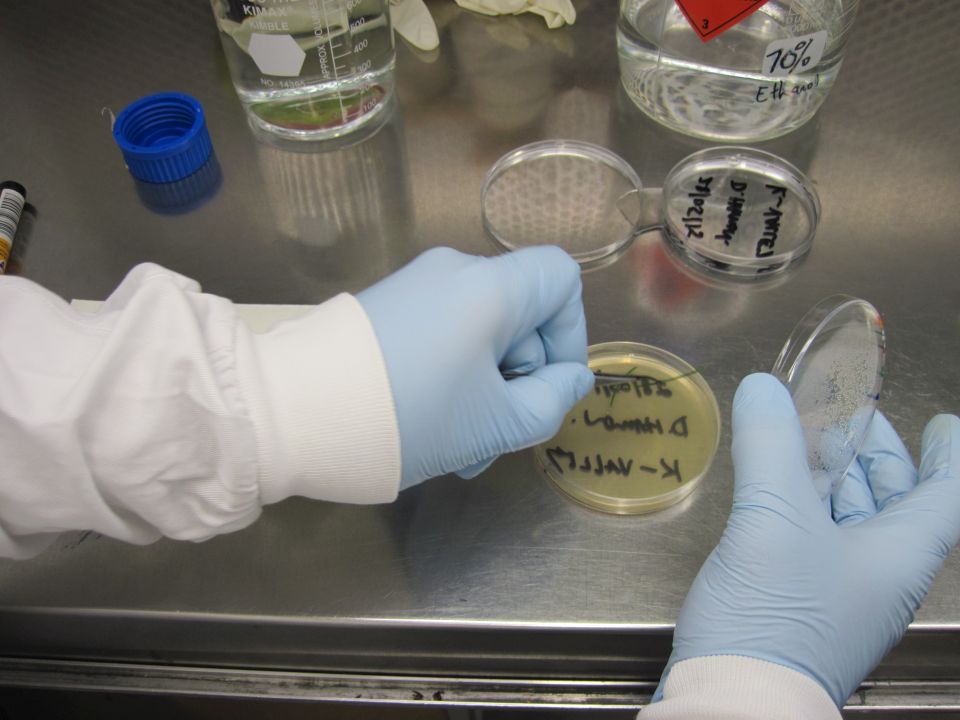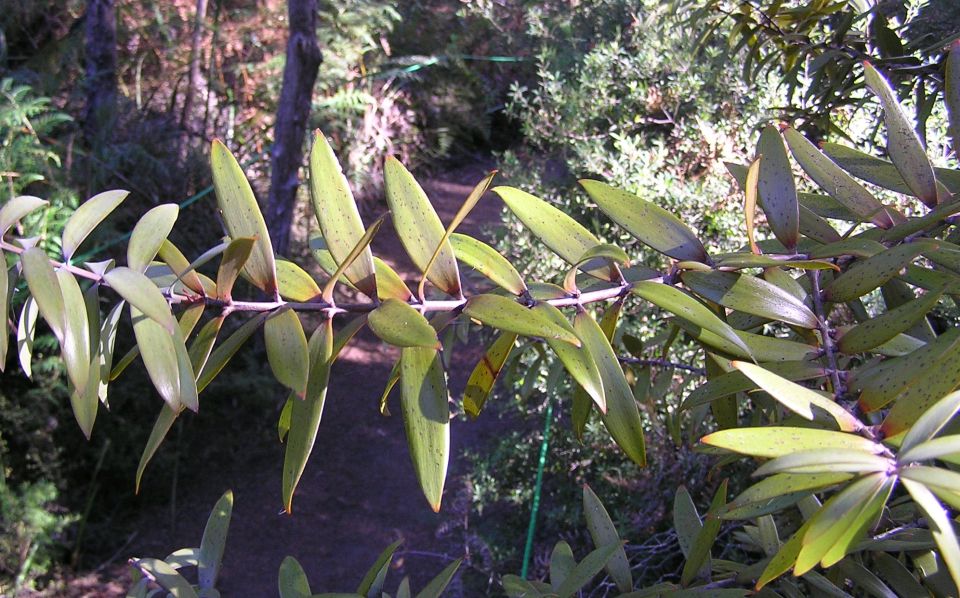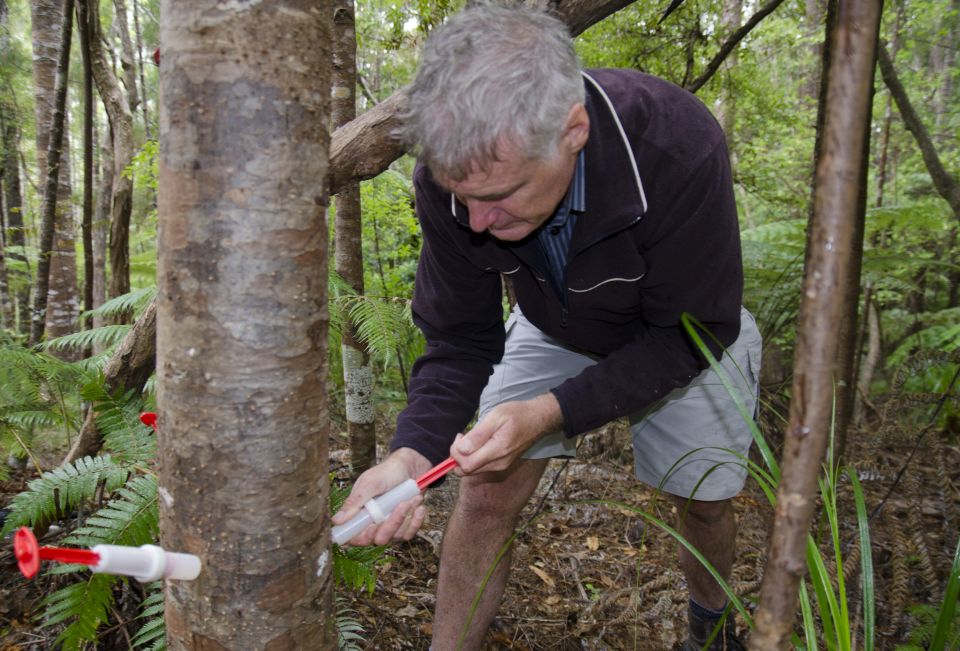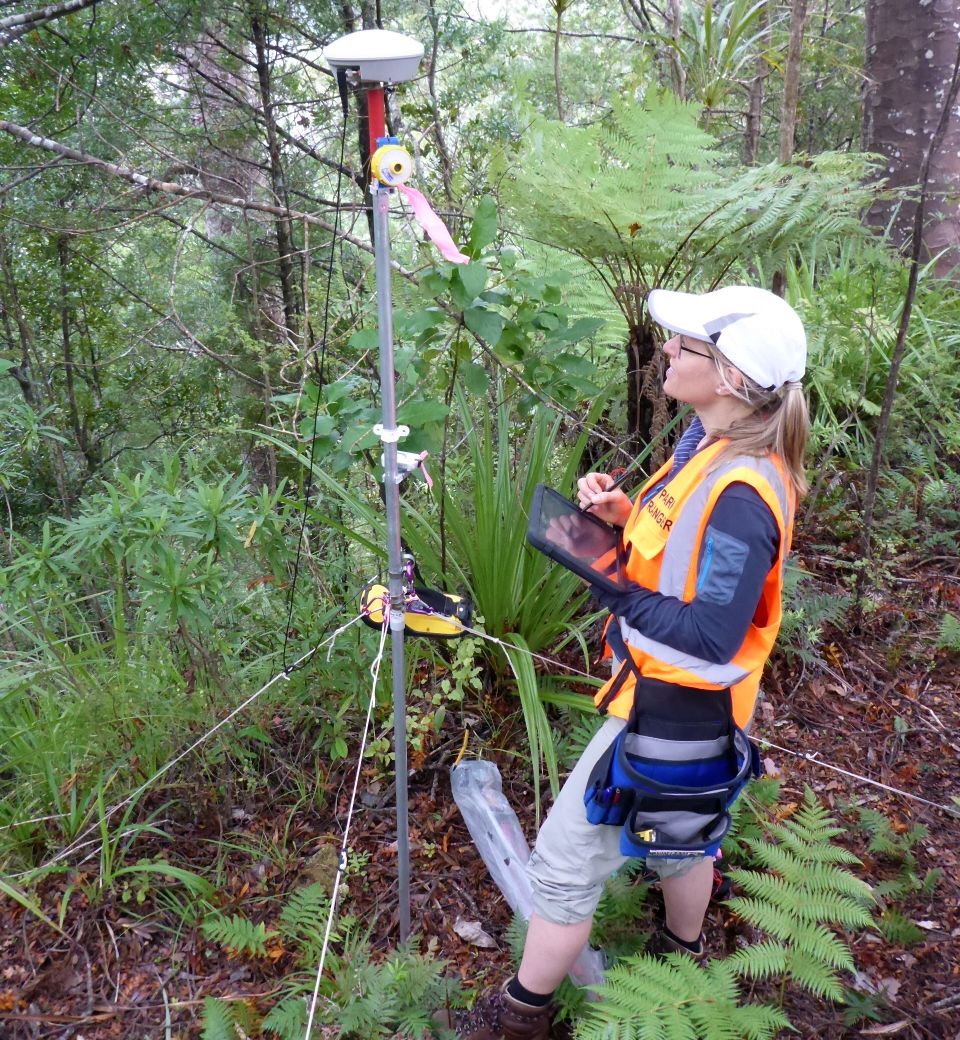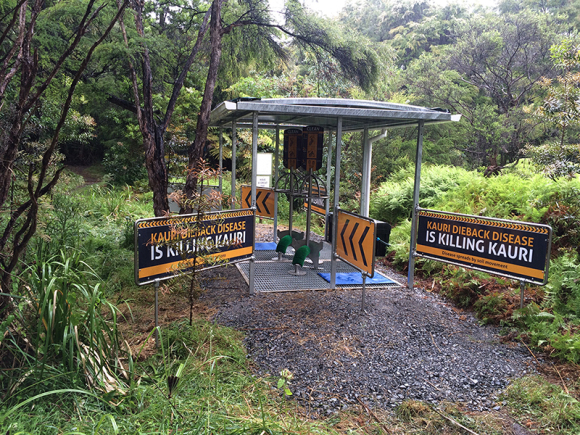Understanding the disease
It is virtually impossible to get rid of Phytophthora from soil in a natural environment. This is despite scientists around the world having studied these types of pathogens for over a hundred years. But scientists are trying to understand how the disease behaves. They have been looking at what role the environment plays. For example, the way temperature and soil moisture influence how a tree becomes infected, and how quickly the disease takes hold.
Scientists at Manaaki Whenua – Landcare Research are trying to unravel the mystery of kauri dieback disease. There is a lot that is still unknown. Their research includes:
- heat treating soil to kill the disease
- understanding how far kauri dieback spores can be found around and under an infected tree
- whether streams can carry the disease to new places.
Genetically strong trees
Scion is trying to find out if kauri trees have any natural resistance to kauri dieback. They have been looking at seedlings from different parent trees. What they have found is that different kauri family lines have different responses to infection.
Kauri trees may be grown in the future that have been selectively bred to resist kauri dieback. This would be helpful for worst affected areas to regenerate the forest for future generations.
A chemical band-aid
Scientists At Plant and Food Research are using phosphite injections to help infected kauri trees. These injections are like a band-aid for sick trees – they slow the symptoms of kauri dieback and allows the tree to live longer. But it does not cure the disease, and the treatment needs repeating after a while.
Scientists are also looking at how effective using phosphite sprays are on diseased trees.
Using natural products
Scientists are also looking at using natural products in the form of biological control. Biological control is where you use other organisms to help fight the disease. One such case being looked at is the use of Trichoderma, which is a fungus, to help fight kauri dieback.
Kauri forests from above and on a computer
Aerial photography of kauri forests is used to survey the number of dead and diseased trees, and to watch healthy trees. Aerial surveys of the Waitākere forests in 2011 and 2016 show that the number of diseased and dead trees has increased.
New research is focussing on using technology such as remote sensing tools. This includes satellite imagery and sensors placed on aircraft which can detect kauri trees and the state of their health.
New wireless computer technology has allowed scientists to collect information in a kauri forest and transfer that information to an office computer. Other technology allows them to find out which areas of kauri are most at risk of spreading the disease. This can help to prevent further spread in those areas.
Using traditional Māori knowledge to help fight the disease
Māori world view treats Te Wao Nui a Tāne as one body or one whole ie all things are connected. Māori are monitoring the health of their kauri forests by monitoring the health of other species that live there, such as birds, plants, and insects. Such species are called Cultural Health Indicators. Stress in a forest will show up in these indicators. The health of these indicators may inform whether the disease is present, as well as the level of impact this is having on the forest.
Māori have also started looking at using traditional medicines to improve forest health and reduce the impact of kauri dieback.
Cleaning your shoes
Cleaning dirty footwear when entering and leaving a kauri forest is important to help stop kauri dieback spreading. 3-dimensional technology has enabled the design of more efficient and effective cleaning stations.


